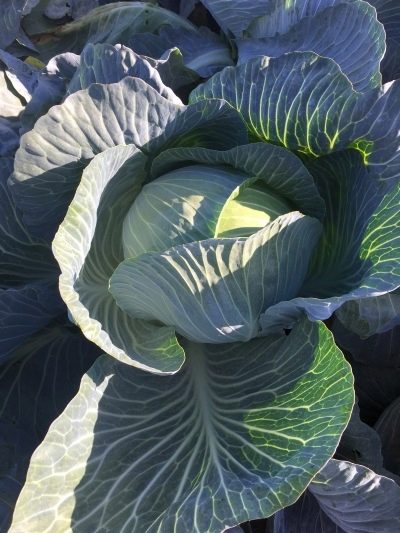
- Authors: European selection
- Name synonyms: Kilaton
- Year of approval: 2007
- Appointment: for fresh consumption, for all types of processing, for canning
- Leaf rosette: raised
- Leaf size: medium size
- Leaf color: gray-green
- Sheet surface: slightly bubbly
- Outside stump: middle length
- Internal stump: short to medium length
When choosing cabbage for planting in a garden bed, many growers and farmers prefer to plant hybrid varieties with high yields and disease resistance. These are the characteristics that Dutch Kilaton cabbage is endowed with.
Breeding history
The late-ripening Kilaton variety is a first generation hybrid created by the breeders group Syngenta Seeds B. V. in 2004. The vegetable appeared in the State Register of Approved for Use in 2007. Cabbage is grown mainly in the open field - small garden beds and farm fields. The vegetable is cultivated in three regions - Central, Volgo-Vyatka and North-West.
Description of the variety
Kilaton cabbage is a compact plant with a spreading leaf rosette. The rosette is characterized by slight elevation, medium thickening with medium-sized foliage of gray-green color with a slight waviness of the ends and a pronounced waxy bloom. A characteristic feature of the plant is a weak blistering of the surface of the leaf plate.
Characteristics of the appearance of the plant and heads of cabbage
Dutch cabbage grows even and tidy, therefore it is very popular among farmers and agrarians. The hybrid belongs to medium-fruited. The mass of a head of cabbage is usually 1.9-3 kg. The shape of the heads of cabbage is correct - round, sometimes round-flat. The structure of the vegetable is dense. The outer stump is medium-long, and the inner stump is shortened. Outside, the vegetable has a gray-greenish color, and inside it is whitish.
Cabbage easily tolerates transportation, and also has excellent keeping quality - up to 7-8 months, if the correct storage conditions are observed. The optimum temperature for this is considered to be from zero to +2 degrees.
Purpose and taste
This Dutch vegetable is characterized by excellent taste. The leaves of the vegetable are crispy, juicy, fragrant, without a fibrous structure.
Kilaton cabbage has table versatility - it is added to fresh salads, salted, pickled, fermented, used in the preparation of hot and cold dishes.
Ripening terms
The hybrid is late-ripening. The growing season lasts 135-140 days. Ripening of vegetables is amicable. The fruiting period is long - from August to October. Harvesting is recommended immediately after the first frost. If you overexpose the cabbage heads in a cold environment, then their keeping quality will remain in question.
Yield
The Dutch hybrid is claimed to be a high-yielding hybrid. With proper agricultural technology and favorable weather conditions, an average of 305-600 centners of cabbage can be harvested from 1 hectare of plantations. On a garden ridge, 10-11 cabbage heads are collected from 1 m2. The maximum yield was recorded at 753 kg / ha.
Growing and care
Vegetable cultivation is carried out mainly in seedlings. Sowing seeds for seedlings is carried out in early April, and bushes are planted on a garden ridge in May, when the temperature regime is quite stable.Bushes with 5-6 true leaves are suitable for transplanting. Planting is carried out according to the scheme 60x50 cm. Planting density is 2-3 plants per 1 m2.
Direct seeding into the ground is possible only in the southern regions of the country. The depth of the seeds should not exceed 1.5-2 cm.
Caring for cabbage includes: regular watering with exceptionally warm water (watering stops 2-3 weeks before harvesting), fertilization (every 3 weeks feeding with liquid organic matter), weeding and loosening of the soil, timely hilling (once a season is enough), prevention viruses and insect infestations.

To grow a rich cabbage crop, you need to know when and how to plant this crop outdoors. Planting dates are determined depending on the variety. It is also necessary to properly prepare the soil and follow the rules of crop rotation.


Soil requirements
The hybrid is very picky about the quality and structure of the soil. The soil should be loose, nutritious, breathable, and breathable. Another important factor is acidity, which must correspond to pH 5. The optimal soil is a mixture that includes humus, low-lying peat, turf and ash.

Cabbage requires particularly careful care when growing. The plant quickly absorbs nutrients, so the soil needs to be enriched regularly. Adequate amounts of minerals, organics and nitrogen must be provided. Some products can be purchased at the store, while others are easy to make at home.
Required climatic conditions
Despite its good stress resistance, the vegetable culture prefers sunny areas, protected from strong winds and drafts. In addition, the vegetable is susceptible to extreme temperature fluctuations and excessive dampness.
Disease and pest resistance
The immunity of the hybrid is high. Due to this, the vegetable culture has absolute resistance to keel, fusarium, and point necrosis. The most dangerous disease for the species is bacteriosis and white rust. Among the pests attacking the plant, one can distinguish the cabbage fly, aphids, greenhouse whitefly, cruciferous flea.
As a preventive measure, it is recommended to carry out light dusting with tobacco dust or wood ash, as well as treatment with insecticides. In addition, fragrant herbs and plants planted nearby with cabbage, for example, marigolds, onions, garlic, basil, celery, repel insects.

Cabbage is a very popular horticultural crop. But growing a good, large and tasty cabbage is sometimes very difficult, because it is often affected by a huge number of diseases and pests. The main role in the cultivation of this vegetable is played by regular prevention, which helps to get a rich harvest, and prevent the occurrence of diseases and the invasion of harmful insects. It is very important to start treatment as early as possible, otherwise there is a risk of spreading the infection to unaffected plants.























































































